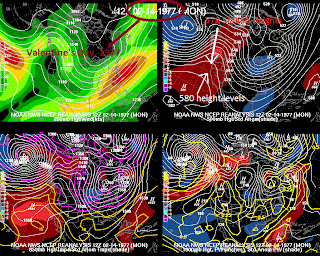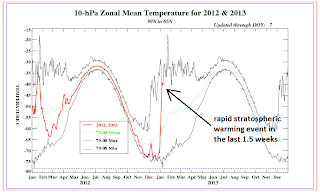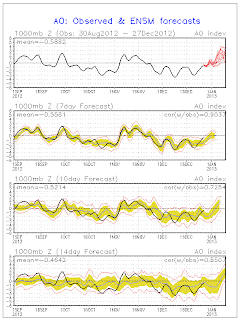Tomorrow is the last day of "Meteorological Winter" for the Northern Hemisphere. Lets take a look at the differences in the customary "Astronomical Winter," which ends on March 20th.
First of all we use Meteorological Winter because temperatures and weather are more similar during this period and slightly more evenly distributed.
Astronomical Winter occurs usually right around December 20th, plus or minus a day depending on the year. The Winter Solstice for the Northern Hemisphere is when the sun angle above the horizon is at its lowest point of the year. It is also the exact moment the direct sun angle passes over the Tropic of Capricorn in the Southern Hemisphere(their summer)
The Spring Equinox, which typically occurs around March 20th, again plus or minus a day. The equinox occurs when the direct sun angle passes directly over the Equator. At this point in time Earth's axis points neither towards nor away from the direct rays of the sun.
Now let's take a look at some factors that differ during these two different classifications for winter.
You'll notice that from the Winter Solstice to another 3 weeks our AVERAGE temperature (based from Climate records) in Redding bottoms out to about 45 degrees. So that Means the coldest 3 weeks of winter, on average occurs during the first 3 weeks of official winter. You'll notice that Meteorological Winter is more even distributed.
Same thing goes for the sun angle above the horizon at noon. The difference between the Solstice and the Equinox is 23.5 degrees. And Meteorological Winter is 13.5 degrees, more even distributed.
For length of Daylight, the difference is nearly 3 hours between the Solstice and the Equinox.
In conclusion if we wanted a fully evenly distributed winter, it would make more since to start winter somewhere in mid to late November.
data source: http://www.timeanddate.com/worldclock/astronomy.html?n=3260&month=1&year=2013&obj=sun&afl=-11&day=1
http://www.wrh.noaa.gov/climate/monthdisp.php?stn=KRDD&year=2013&mon=2&wfo=sto&p=temperature



















.gif)
.png)

























.gif)









